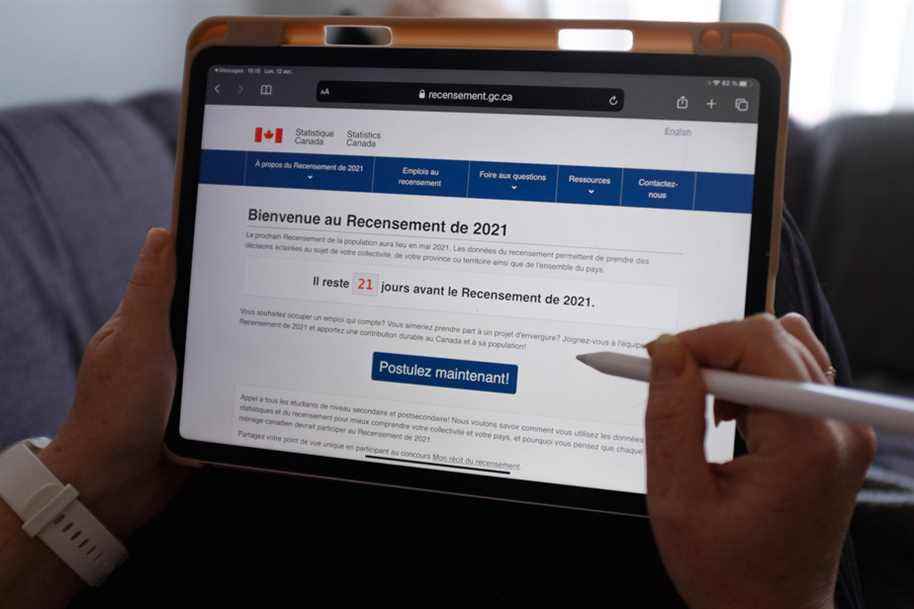(OTTAWA) Federal officials have questioned the quality of 2021 census data for Indigenous communities after collection efforts were hampered by factors such as the discovery of unmarked graves on the grounds of residential schools, according to reports. documents.
Posted at 2:22 p.m.
Briefing notes obtained by The Canadian Press through the Access to Information Act reveal Statistics Canada’s difficulty in surveying more than 600 First Nations and Inuit communities.
The materials were prepared for Indigenous Services Canada – the department that funds on-reserve housing, as well as other social infrastructure and programs.
Last October, weeks after the nearly five-month census window closed on September 24, officials provided an update to the deputy minister.
The update pointed out that while the overall response rate was 98%, it was only around 85% for Indigenous communities.
This figure was down from 92% in the 2016 census year.
“While the results of the data collection exceeded expectations given the circumstances, questions remain about the quality of the data,” it read.
“Lower data quality will likely limit the ability to develop a strong database for decision-making, whether federal, provincial or Indigenous governments use the 2021 census data.”
Indigenous Services Canada has not yet responded to a request to comment on the situation.
In Canada, the census is taken every five years to collect population and demographic information that helps governments make funding decisions. Communities also depend on it for infrastructure planning.
Statistics Canada spokesman Peter Frayne said that in the previous two census years, the number of reserves not fully counted fell to 14 in 2016 from 36 in 2011.
In 2021, that number jumped to 63, and Mr. Frayne said the COVID-19 pandemic, combined with wildfires and heatwaves, impacted the results.
The federal agency needs permission to enter a First Nations community. He reported that of the 63 uncounted communities, 25 had not allowed entry.
Documents tell a more detailed story of what happened behind the scenes.
Even before data collection began, Statistics Canada, trying to figure out how to conduct a census as the pandemic raged, opted to rely more on Canadians to complete their forms online rather than through face-to-face interactions.
Efforts have been made to set up local counters for Aboriginal communities, but less than 1,000 of the approximately 2,200 positions available have been filled.
During that summer, Indigenous Services officials pointed to delayed census participation as a problem for First Nations and Inuit communities.
“Despite an unprecedented level of effort by Statistics Canada, the collection of 2021 Census data from First Nations and Inuit communities has been significantly hampered by the COVID-19 pandemic,” an update said. day in mid-August to the Deputy Minister.
“Turnouts have been further dampened by the discovery of burial sites on the grounds of former Indian residential schools, as well as the recent wildfires that have disrupted the lives of so many Aboriginal families in northern Ontario and the western provinces. »
She goes on to say that the discovery of unmarked graves “exacerbates negative sentiment toward the federal government, potentially leading communities to reject participation in the 2021 census.”
More than 150,000 Indigenous children were forcibly removed from their families and sent to church-run, federally-funded boarding schools, where physical and sexual abuse was common.
Indigenous and non-Indigenous Canadians were confronted with this reality last May, when a First Nation in British Columbia announced that it had found what are believed to be the remains of 215 children buried on the grounds of a former boarding school.
Census Director General Geoff Bowlby said on the advice of Statistics Canada’s Indigenous liaison advisers, the agency had suspended collection for a period out of respect for communities.
That delay, coupled with how First Nations coped with the painful discovery, affected response levels, he said.
“It’s intangible […] but it certainly would have had an impact. »
People’s willingness to fill out the census form depends on trust and relates to experiences they have had with governments, Bowlby noted.
“There is a burden that is placed on people by the census and we have to be careful and aware of what is happening in people’s lives. »
At one point, officials saw that only 63 of the country’s more than 600 Indigenous communities had been counted, so in mid-July Statistics Canada decided to deploy teams to remedy the situation.
In mid-August, that number began to rise, but officials noted that census information was still missing in some 500 communities as the window to collect it closed. The consequence of having such a large gap is “considerable on many levels”, they said.
“The sheer scale of the work remains a concern for everyone involved,” reads a briefing note to Indigenous Services.
Census data is an “essential resource”, officials wrote, used by the ministry to track the process of closing the socioeconomic gap between Indigenous and non-Indigenous peoples.
“Efforts to ensure that this data remains of the highest quality are critical to maintaining the federal government’s ongoing commitment to transparency and results, and its dedication to advancing reconciliation with Indigenous peoples,” we read.
With more census data missing for individual Indigenous communities than in previous years, Bowlby said gaps could be filled by creating forecasts from 2016 figures as well as gleaning aggregate data from records. and the Indian Registry, which is controlled by Indigenous Services Canada.
“But there’s no such thing as census data and that’s why it’s so important that we get it, and get it right every census,” he said.
